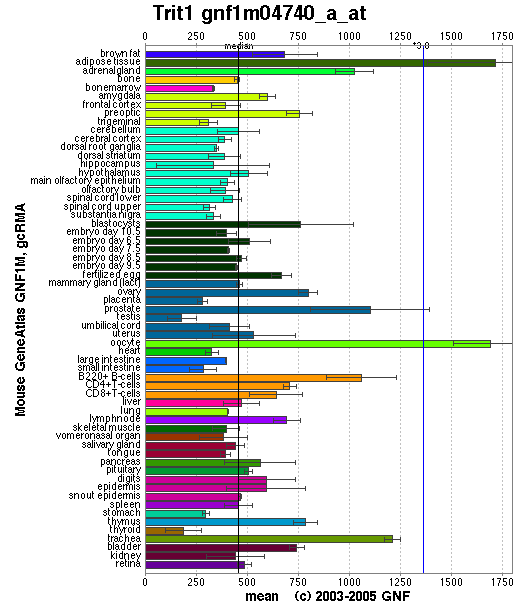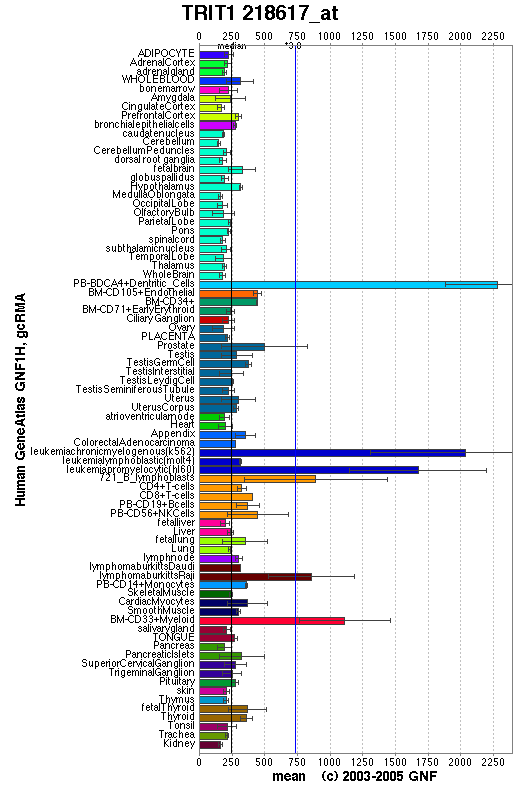Functional analysis of 2qgn: Difference between revisions
No edit summary |
No edit summary |
||
| Line 12: | Line 12: | ||
reaction taken from http://www.expasy.org/cgi-bin/nicezyme.pl?2.5.1.8 | reaction taken from http://www.expasy.org/cgi-bin/nicezyme.pl?2.5.1.8 | ||
The C2-H2 Zinc finger motif found in tRNA-IPT also contributes to the enzyme's function. This motif is commonly found in nucleic acid-binding proteins and is composed of 25 to 30 amino acid residues. | |||
'Zinc finger' domains [1,2,3,4,5] are nucleic acid-binding protein structures first identified in the Xenopus transcription factor TFIIIA. These domains have since been found in numerous nucleic acid-binding proteins. A zinc finger domain is composed of 25 to 30 amino-acid residues. There are two cysteine or histidine residues at both extremities of the domain, which are involved in the tetrahedral coordination of a zinc atom. It has been proposed that such a domain interacts with about five nucleotides. A schematic representation of a zinc finger domain is shown below: | |||
x x | |||
x x | |||
x x | |||
x x | |||
x x | |||
x x | |||
C H | |||
x \ / x | |||
x Zn x | |||
x / \ x | |||
C H | |||
x x x x x x x x x x | |||
In addition to the conserved zinc ligand residues it has been shown [6] that a number of other positions are also important for the structural integrity of the C2H2 zinc fingers. The best conserved position is found four residues after the second cysteine; it is generally an aromatic or aliphatic residue. A profile was also developed that spans the whole domain | |||
http://ca.expasy.org/cgi-bin/nicedoc.pl?PDOC00028 | |||
Revision as of 08:33, 21 May 2008
Isopentenyltransferases (IPT) are enzymes that functions to catalyse the biosynthesis of cytokinins. Cytokinins are tRNA molecules containing modified adenine found at position 37 of the tRNA. An anticodon binding to codon encoding for uridine is found next to this modified adenine. This means that this modification occurs at the acceptor stem of tRNA molecules.This detailed and precise adenine modification is important in maintaining correct framework and the subsequent translation pathway.
Cytokinins are involved in several biochemical and cellular processes such as cell division and growth, both in plants and animals. They can exist in two forms; the tRNA-free and the tRNA-bound form, through addition of adenine to tRNA or AMP acceptor molecules. As the name suggest, tRNA-IPT adds adenine to tRNA molecules specifically to tRNA which binds to the codon encoded with uridine. Below is the reaction catalysed by tRNA isopentenyltransferase.
Isopentenyl diphosphate + tRNA <=> diphosphate + tRNA containing 6-isopentenyladenosine
reaction taken from http://www.expasy.org/cgi-bin/nicezyme.pl?2.5.1.8
The C2-H2 Zinc finger motif found in tRNA-IPT also contributes to the enzyme's function. This motif is commonly found in nucleic acid-binding proteins and is composed of 25 to 30 amino acid residues.
'Zinc finger' domains [1,2,3,4,5] are nucleic acid-binding protein structures first identified in the Xenopus transcription factor TFIIIA. These domains have since been found in numerous nucleic acid-binding proteins. A zinc finger domain is composed of 25 to 30 amino-acid residues. There are two cysteine or histidine residues at both extremities of the domain, which are involved in the tetrahedral coordination of a zinc atom. It has been proposed that such a domain interacts with about five nucleotides. A schematic representation of a zinc finger domain is shown below:
x x
x x
x x
x x
x x
x x
C H
x \ / x
x Zn x
x / \ x
C H
x x x x x x x x x x
In addition to the conserved zinc ligand residues it has been shown [6] that a number of other positions are also important for the structural integrity of the C2H2 zinc fingers. The best conserved position is found four residues after the second cysteine; it is generally an aromatic or aliphatic residue. A profile was also developed that spans the whole domain

